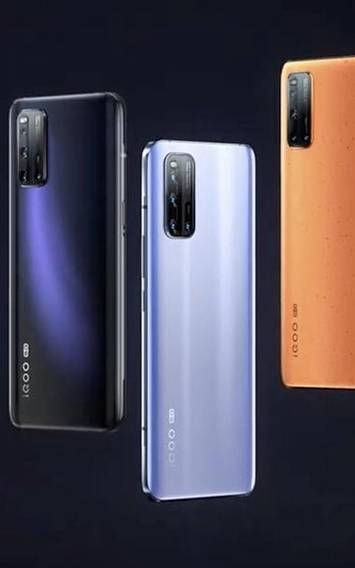
One might think the Chinese company BBK had its hands full managing all its multiple brands and sub-companies. But no, it’s adding yet another, called iQOO, pronounced ‘eye-koo’ which stands for ‘I quest on and on’.
Oh dear. iQOO comes from Vivo, specifically, and it’s interesting that its company-cousin, the Realme X50 Pro, is launched at almost the same time, both touting the Snapdragon 865 chip. Considering the Realme X50 Pro was ahead of it coming to market with the new chip, iQOO has positioned itself as a gaming centric phone in its quest, on and on, for prominence.
We look back-first at this phone as well, as all smartphones these days are beautifying the other-facing side. The iQOO 3, as the new phone is called, to be exact, has an interesting purple highlight shining through the black. Or, to use the name invented for this variant, ‘Tornado Black’. It does have an interesting deep stormy look.
The other variants are Volcanic Orange, which also I have seen, and which is definitely orange with a few black specs spattered over it — volcanic ash, I presume. That’s coming a bit later. The third variant is a ‘Quantum Silver’. Really, companies must be having quite a time coming up with names for these colours.
The glossy back, in Gorilla Glass 6 no less, doesn’t show smudges as much as many other smartphones do. But it’s slippery and, if you’re planning on getting enthusiastic while playing games, you might like the protection of a case. The cameras on the back are in a rectangle and arranged quite uniquely, giving the feeling of attention to detail.
The iQOO 3 is quite chunky. And not light. The battery on the inside is a 4,440mAh so that may jolly well be the reason. Big gamers’ hands may be able to handle this device but mine struggled with its weight. It’s not as broad as it is big and heavy, luckily.
On the front, the Super AMOLED screen has a small punch-hole top right. This is a 6.4-inch display (I wonder why not larger to offer gamers more screen space). It has a 20:9 aspect ratio and a 91.4 per cent screen-to-body ratio with the bezels naturally quite small as is the norm now. It sports a 1,080 x 2,400 pixels resolution, with a pixel density of 409ppi. It has a peak brightness of 1,200 nits and supports HDR10+. This isn’t a phone with a choice of refresh rates, though the company says it has a 180Hz touch response rate, whatever that means. Strangely, for a gaming phone, you get just one speaker, though it sounds loud. If you want more, you’ll have to blast your ears with headphones, for which there’s a 3.5mm jack.
Meet the monster
The iQOO 3 calls itself a monster for a reason: it runs on the Snapdragon 865 with a whole 12GH of LPDDR5 RAM AND 256GB of UFS 3.1 storage (the variant we saw) . It uses Adreno 650 GPU for graphics. Benchmark results are nice and high and the actual performance is both snappy and smooth. The in-display fingerprint sensor and face unlock are both very fast as well, and there are all manner of animations you can enable. There’s a 5G variant available which as we all know isn’t much use right now. The battery is a 4,440mAh with a 55W charger and it finishes up in about 50 minutes, in my experience. The iQOO interface is not specially likeable, sitting on top of Android 10, but what’s special is the gaming aspect.
Dig into Settings and you’ll find the Ultra Game Mode which you turn on to get granular control over your gaming experience. There are a few options that apply to all games, such as whether you’d like to shut off all notifications and calls, and there are deeper ones specific to certain games. Brightness, smoothness and other parameters can be locked down.
Most interestingly, the phone has pressure sensitive buttons on the right edge that are more or less flush with the body of the phone. These ‘Monster Buttons’ work to trigger certain actions in specific games such as PUBG. These can be mapped. The button on the left happens to be a Google Assistant trigger.
The cameras include a 48MP primary lens with f/1.8 aperture, 0.8 micron pixel size and a 13 MP telephoto camera, f/2.5 aperture, a 2x optical zoom lens and a 13 MP ultra-wide camera with f/2.2 aperture. There’s a 2 MP depth sensor with f/2.4 aperture. On the front, there’s a 16 MP selfie camera with a f/2.5 aperture. These cameras are fine, just not special for a device that otherwise has quite a few high specs. But it is in keeping with its price.
[“source=thehindubusinessline”]

